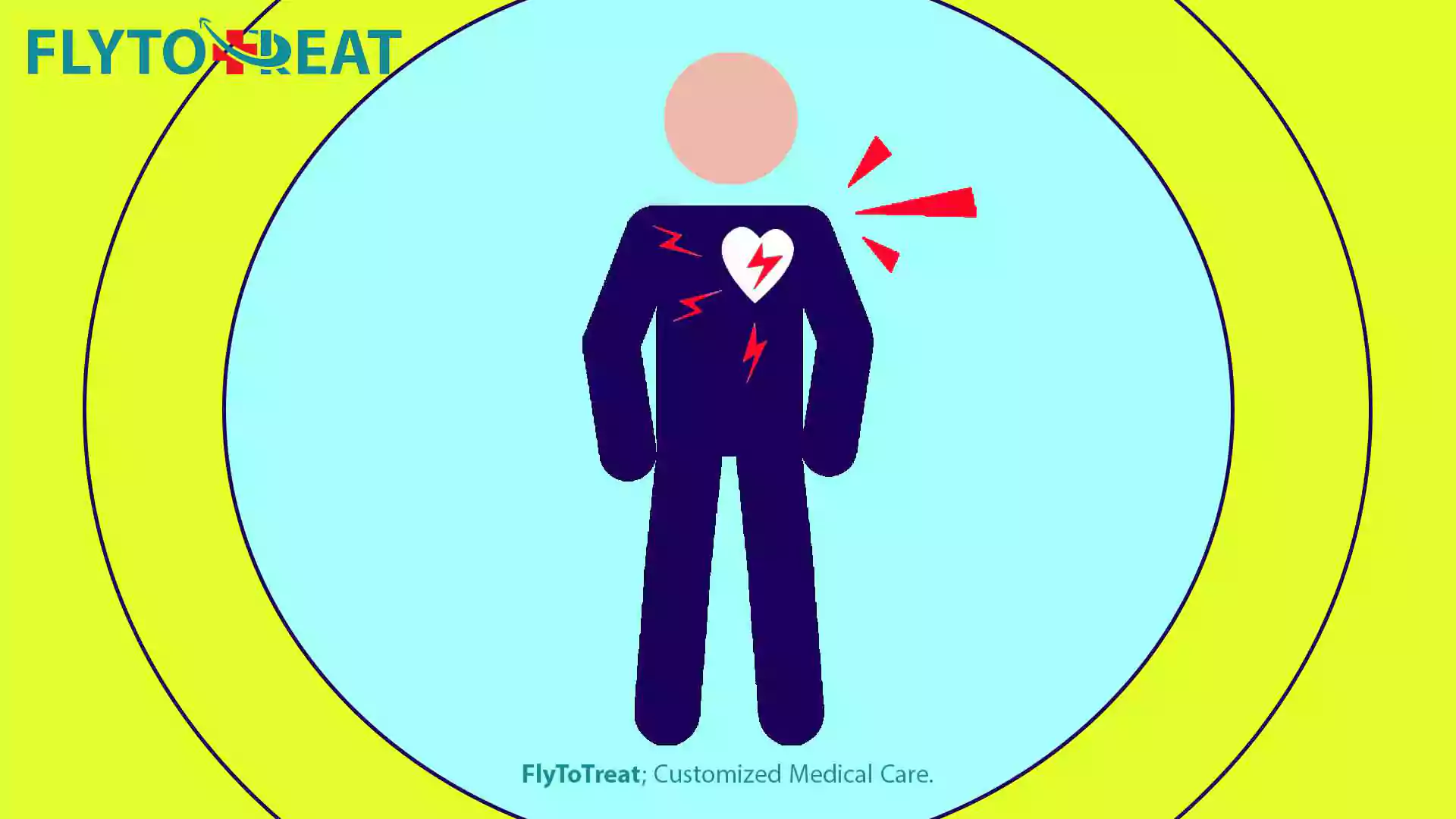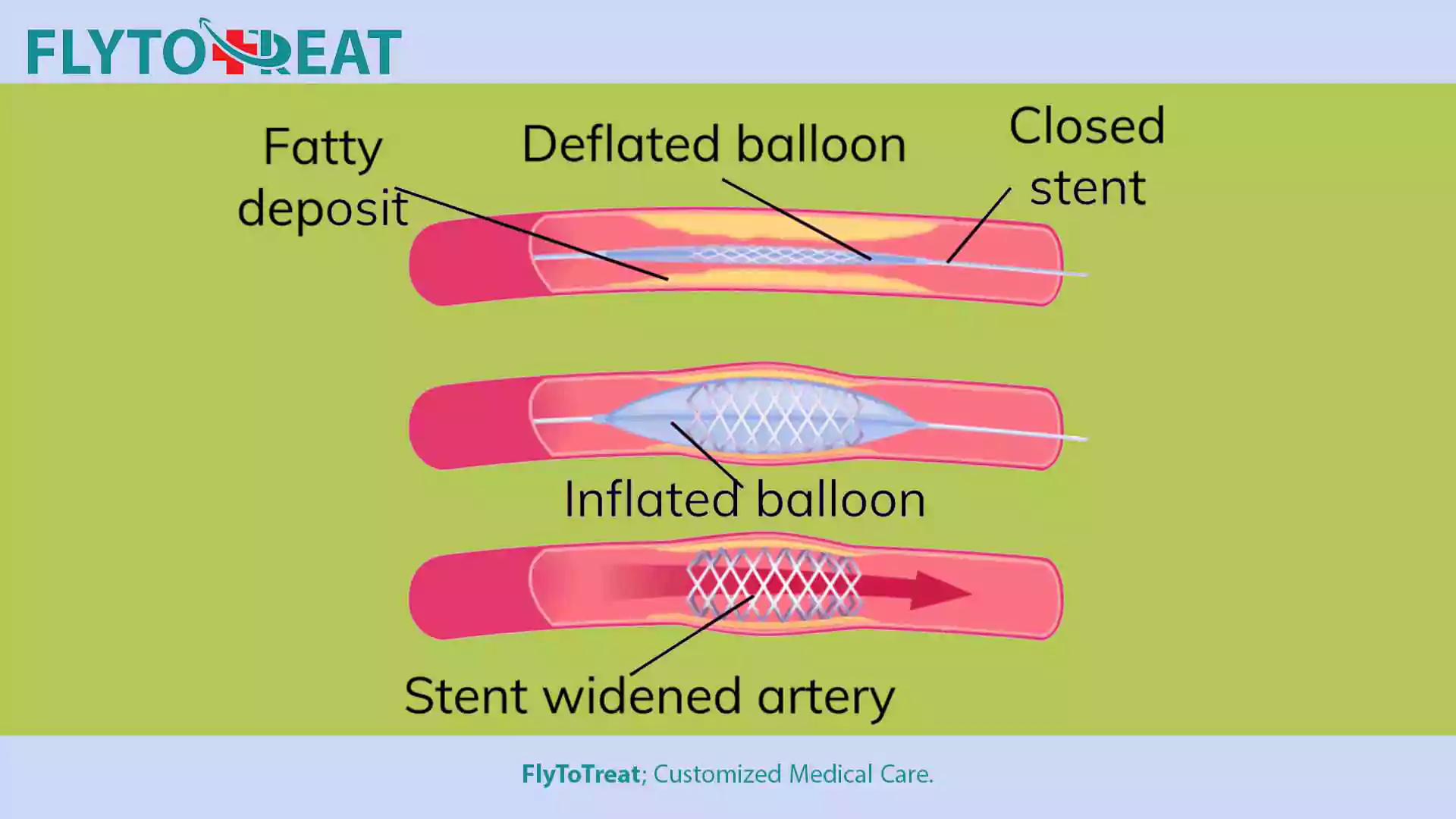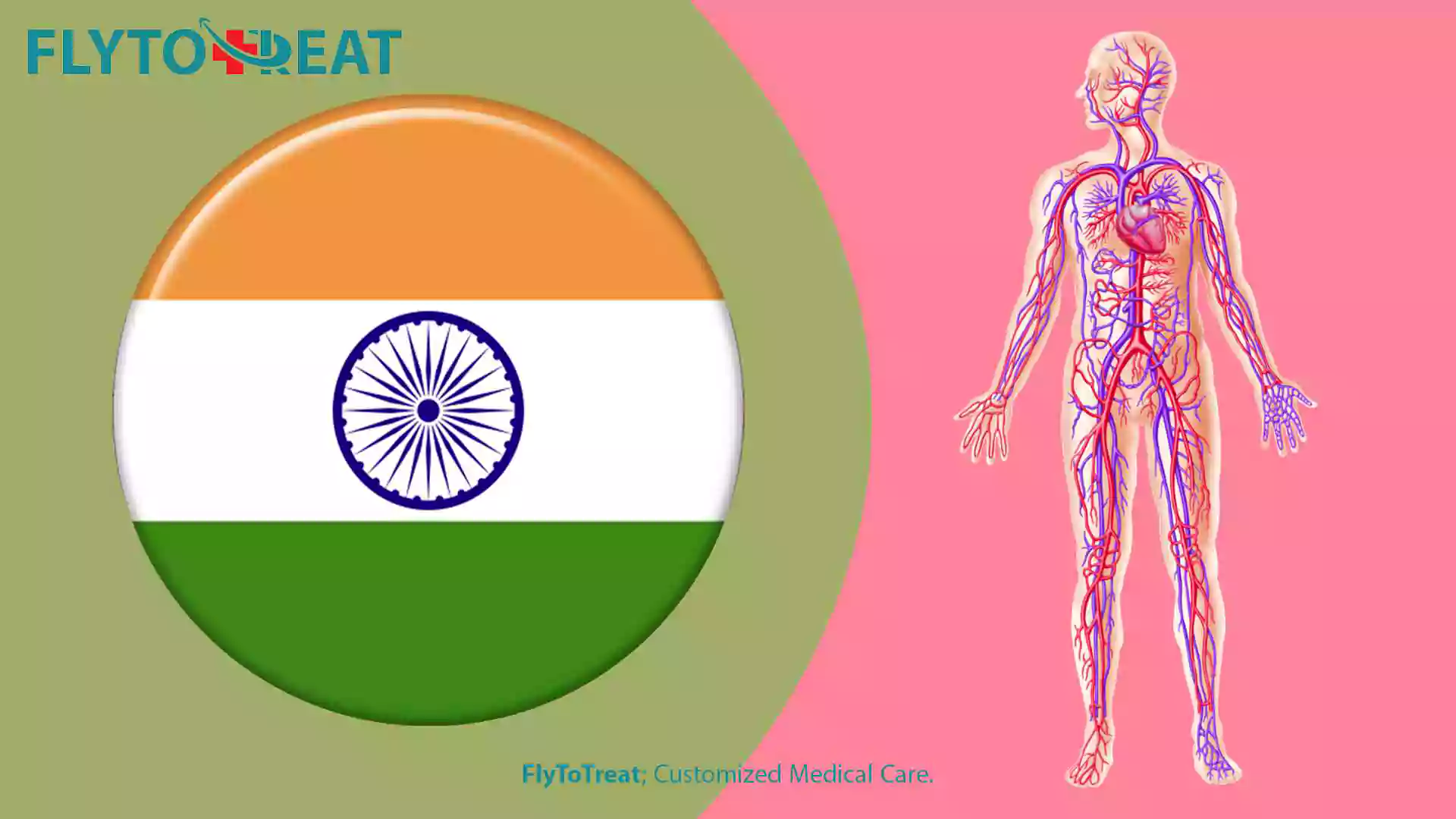
Vessels Angioplasty in India
What is Angioplasty?
An angioplasty is a minimally invasive technique used to clear blocked arteries and restore normal blood flow to specific organs or tissues in the body. If you also suffer from clogged arteries, you have probably considered vessels angioplasty in India because of its high success rate. Here are all the tips you need to know about vessels angioplasty in India.
The blood vessels that carry nutrient-rich, oxygenated blood to your organs and tissues are called arteries. When fat, cholesterol, calcium, and other chemicals contained in the blood pile up, arteries constrict or get clogged.
Plaque is the result of this build-up, which hardens and narrows your arteries over time, restricting the flow of oxygen-rich blood.
Narrowed or clogged arteries left untreated can cause tissue death, heart attack, stroke, and even death, depending on where the build-up occurs inside the body.
It's critical to speak with your doctor as soon as possible about any strange symptoms you have and your treatment choices.

Why do blockage and narrowing of arteries occur?
When fat, cholesterol, calcium and other chemicals in the blood accumulate in the arteries, the arteries get contracted or blocked.
This accumulation of accumulated material is called plaque. Plaque narrows your arteries over time and thickens their walls. As a result of this constriction, your blood flow will no longer be rich in oxygen.
If you have narrowed or blocked arteries, you are at high risk for heart attack, stroke, and tissue death. Therefore, it is essential that you talk to your doctor as soon as possible to avoid these risks, which can even lead to your death.
Coronary Angioplasty and Stent Insertion
When physicians use a balloon to stretch a restricted or obstructed artery, it is called an angioplasty procedure. However, surgeons in the most current procedures also use a stent (inserting a small wire-mesh tube into the artery). The stent should be left in your body permanently to improve your blood flow.
Percutaneous transluminal coronary angioplasty is another name for this technique (PTCA). Percutaneous coronary intervention is the procedure used to describe the combination of coronary angioplasty and stenting (PCI).
What Is the Reason Behind This Surgery?
Along with all the other organs in the body, the heart requires steady blood flow. The coronary arteries are in charge of providing this.
These arteries can thin and stiffen as individuals age (a condition known as atherosclerosis), leading to coronary heart disease.
Angina, or chest discomfort, can be caused by a blockage in the heart's blood supply, which is frequently brought on by physical exertion or stress.
While medicine may generally relieve angina, in extreme situations when medication is unsuccessful, coronary angioplasty is helpful to restore blood flow to the heart.
After a heart attack, the surgery is frequently utilized as emergency therapy.
If you have any of the following symptoms, this operation may be a viable therapy option for you:
- Your attempts to improve your heart health by having a healthy lifestyle couldn't help you reduce the disease.
- The pain in your chest (angina) is becoming worse.
- If you have a heart attack, angioplasty can quickly open a blocked artery, reducing damage to your heart.
Not everyone is a candidate for the procedure. Your doctor may decide that you'd better take advantage of coronary artery bypass surgery rather than angioplasty. Your doctor will make that decision based on the severity of your cardiac disease and your general health.
If you have any of the following symptoms, you may need coronary artery bypass surgery:
- The primary artery supplying blood to your heart's left side is thin.
- Your heart muscle is in poor condition.
- You have diabetes and several significant artery blockages.
In coronary artery bypass surgery, doctors take one of your healthy blood vessels from another part of your body to bypass a blocked part of your artery.
How Does an Angioplasty Procedure Work?
Angioplasty is not regarded as a major procedure. These operations are often conducted under conscious or mild sedation in a cardiovascular catheterization laboratory, also known as a "cath lab."
Your surgeon threads a tiny tube called a catheter through a small puncture in your leg or arm artery to perform the surgery. Then the surgeon advances it into the artery with the aid of imaging until it reaches the constriction or blockage.
Once they position the catheter appropriately, they inflate a tiny balloon at the end of the catheter to force the plaque against the artery walls and open the conduit to restore flow.
It is necessary to inflate and deflate the balloon multiple times in order to extend the artery. When the constricted or obstructed region has been successfully widened, the surgeon will deflate and remove the balloon.
In some cases, they place a foldable stent over the deflated balloon before placement. When the balloon is inflated, the stent pushes the plaque against the artery wall while opening the stent.
The stent stays in place indefinitely, helping to keep the artery open. After that, the balloon and wire are removed.
The process lasts between 30 and 60 minutes, depending on the patient's condition.

Different Types of Angioplasty
Angioplasty can be done to unblock blood vessels in a few distinct situations. Although cardiac angioplasty is the most well-known kind of angioplasty, the treatment is also used in other body regions.
Cardiac Angioplasty
A cardiologist or surgeon performs cardiac angioplasty to unblock one or multiple arteries that supply blood to the heart muscle. Coronary artery disease is defined as the blockage of one or more arteries feeding the heart.
Patients needing cardiac angioplasty may have symptoms of pain and discomfort in their chest or shortness of breath.
Peripheral Angioplasty
The operation of unblocking arteries in your extremities, such as your arms and legs, is known as peripheral angioplasty. Patients who require peripheral angioplasty may have arm or leg discomfort, cramps, exhaustion, tingling, skin discoloration, or numbness.
Peripheral angioplasty is a procedure used to treat peripheral arterial disease (PAD). PAD is a circulatory condition in which a person's legs don't get enough blood flow to keep up with their body's requirements because of restricted or clogged arteries.
Peripheral angioplasty may be performed if you have an AV fistula or an AV graft and have issues with blood flow during hemodialysis.
Suppose you're having trouble dialyzing or can't dialyze at all. In that case, your doctor may request imaging tests like an ultrasound or an angiography to look for any narrowing or blockages in your vessels that might be causing your dialysis troubles.
If a narrowing or blockage is discovered, angioplasty may be used to reopen the vessels so that you may continue to use your AV fistula or graft for dialysis.
Is coronary angioplasty a risky procedure?
Angioplasty is a less intrusive method of opening blocked arteries than bypass surgery, although it still has significant dangers.
The following are the most prevalent angioplasty risks:
Re-narrowing of your artery: When angioplasty is paired with installing a drug-eluting stent, the treated artery has a slight chance of becoming blocked again. When bare-metal stents are utilized, the risk of re-narrowing the artery is increased.
Blood clots: Even after the surgery, blood clots can grow within stents. These clots have the potential to block an artery, resulting in a heart attack. To lower the risk of clots forming in your stent, take aspirin in conjunction with clopidogrel (Plavix), prasugrel (Effient), or another drug that helps prevent blood clots precisely as recommended.
Consult your doctor to determine how long you'll have to take these drugs. Do not stop taking these drugs without first consulting your doctor.
Bleeding: You may experience bleeding at the site where your physician puts the catheter in your leg or arm. Usually, this just causes a bruise, but significant bleeding might occur, necessitating a blood transfusion or surgical operation.
Other uncommon dangers include:
Heart attack: It's possible that you'll have a heart attack during the surgery, but this is quite unlikely.
Coronary artery damage: The coronary artery may be ripped or burst during the surgery. These issues may necessitate bypass surgery as soon as possible.
Kidney problems: The dye used during the surgery and stent implantation might harm the kidneys, especially those who already have issues with their kidneys. If you're at a higher risk, your doctor may make efforts to protect your kidneys, such as decreasing the quantity of contrast dye used and ensuring that you're adequately hydrated throughout the operation.
Stroke: A stroke might result if plaques break away as the catheters are put through the aorta during the surgery. Blood clots can grow in catheters as well, and if they break free, they can go to the brain. A stroke is a very uncommon side effect of coronary angioplasty. Doctors will give you blood thinners during the surgery to lessen the danger.
Abnormal heart rhythms: your heartbeat may be too rapidly or too slowly during the treatment. These cardiac arrhythmia issues are typically transient, but your condition may require drugs or a temporary pacemaker.
How Should I Get Ready for Vessels Angioplasty in India.?
Your doctor will evaluate your medical history and conduct a physical examination before performing it. Before your procedure, you may need to undergo specific tests, such as a chest X-ray, an electrocardiogram, and blood tests.
Your doctor will also do a coronary angiography to determine whether your heart's arteries are obstructed and whether they may be repaired with this procedure.
If your doctor discovers a blockage during your treatment, this surgery and stenting may be performed right after the angiogram while your heart is still catheterized.
The healthcare team of vessels angioplasty in India will prepare instructions for you, including:
- Before your surgery, the doctor may advise you to change or stop taking certain medications, including aspirin, nonsteroidal anti-inflammatory drugs (NSAIDs), or blood thinners. Tell your doctor about all of your prescriptions, including herbal supplements.
- The surgery usually requires you to fast for six to eight hours before the procedure.
- In the morning of your procedure, take the prescribed medicines with only short sips of water.
- To take to the hospital, gather all of your prescriptions, including nitroglycerin if you use it.
- Make arrangements for return transportation. It would help if you stayed in the hospital overnight for angioplasty, and you could not drive yourself home the next day.

Following the Surgery
If you have a non-emergency operation, you'll likely spend the night in the hospital while your heart is checked and medicines are modified. The week following the operation, you should be able to go back to work or resume your usual routine.
Drink lots of water when you get home to help flush the contrast dye out of your system. At least a day later, avoid intense exertion and heavy lifting. It would help if you discussed other activity limits with your doctor or nurse.
If you are experiencing any of the following symptoms, don't hesitate to get in touch with your doctor's office or hospital personnel right away:
- When the location where your catheter was implanted begins to bleed or enlarge, it is considered a medical emergency.
- The location where your catheter was implanted causes you pain or discomfort.
- You may experience redness, swelling, discharge, or a fever, which are all indicators of infection.
- The temperature or color of the leg or arm utilized for the surgery has changed.
- You're dizzy or weak.
- You feel short of breath a lot or have chest discomfort.
What Are Angioplasty's Limitations?
Due to considerable narrowing or blockage inside the artery, the catheter used in the operation may not be able to safely pass into the artery to inflate the balloon and press the plaque against the arterial wall.
Patients may get only minor or no improvement in their symptoms. Surgeons may refer patients for surgery to clear their blockages in certain situations.
Is There Any Other Option?
Your cardiologist may consider a coronary artery bypass graft if several of your coronary arteries have been clogged and restricted or if you have irregular anatomy in your arteries.
Coronary artery bypass is an invasive procedure in which healthy blood vessel sections are removed from other places in the body and connected to the coronary arteries.
Blood is channeled into these veins, bypassing sections of the restricted or obstructed arteries.
Conclusion
This surgery significantly improves blood flow through a previously restricted or obstructed coronary artery. In general, chest discomfort should subside. You will be able to work out more effectively.
Your heart condition does not disappear just because you get angioplasty and stenting. You must live a healthy lifestyle and take your medications as directed by your doctor.

The Best Vessels Angioplasty in India with FlytoTreat
Reasons at a glance:
- We offer the best Asian hospitals to pioneer minimally invasive surgery on the continent.
- We employ a bioresorbable vascular scaffold to treat heart disease.
- We are one of the few Asian institutions to do heart surgery using cutting-edge technologies.
- We provide the most advanced percutaneous transcatheter aortic valve replacement therapy in India.
What Factors Led to India Becoming One of the Greatest Treatment Destinations?
India has become the most popular medical tourism destination in the world. Indian physicians and scientists are regarded as the greatest globally, having received their education at the best Indian and foreign medical schools.
Medical diagnosis and treatment of formerly incurable disorders in this country have improved because of technological advancements.
India's corporate hospital standards are world-class, capable of competing with the finest, and can provide you with any service available elsewhere globally.
Medical care in India has several advantages, including lower costs and access to cutting-edge medical technology.
The Indian government strives to create the most suitable quality criteria to reassure people seeking treatment.
Until now, a considerable number of people have traveled to India for treatment, and the number is steadily increasing, making India the third-largest destination for medical treatment.
FlytoTreat Will Help You
It is a minimally invasive outpatient operation, but we appreciate that it is a major choice, and we are always delighted to answer any questions or concerns you may have.
Our specialists at FlytoTreat are trained and equipped to undertake minimally invasive treatments for various artery conditions.
FlytoTreat provides you with successful and safe treatment in an outpatient environment.
If you'd like to talk with one of our professionals or learn more about vessel angioplasty in India, you can always contact us to schedule a free appointment.
MEDICALLY REVIEWED BY: Dr. Ali Bazazi
AUTHOR: FlytoTreat's team of Authors
13 May 2024 - Updated At: 13 May 2024
Related Articles
Comment




